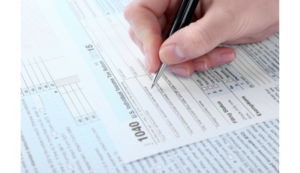1. TDS under GST: Who is the Deductor & Deductee?
GST Council in its 28th meeting held on 21.07.2018 recommended the introduction of TDS from 01.10.2018.
Following would be the deductors of tax in GST under section 51 of the CGST Act, 2017 read with notification No. 33/2017-Central Tax dated 15.09.2017:
(a) A department or establishment of the Central Government or State Government; or
(b) Local authority; or
(c) Governmental agencies; or
(d) An authority or a board or any other body;
(i) set up by an Act of Parliament or a State Legislature; or
(ii) established by any Government, with 51% or more participation by way of equity or control, to carry out any function; or
(e) a society established by the Central Govt, the State Govt, or Local Authority under the Societies Registration Act, 1860; or
(f) Public sector undertakings.
GST Law provides for tax deduction at source (TDS) by the specified category of persons when they make payment to the supplier of taxable goods/services at a prescribed rate (i.e. Currently 2%).
2. When tax deduction is required to be made in GST?
When payment is being made, TDS is required to be deducted from the payment made/credited to a supplier, if the total value of supply exceeds Rs. 2,50,000. This value shall exclude the taxes leviable under GST (i.e. ‘Central tax’, ‘State tax’, ‘UT tax’, ‘Integrated tax’ & Cess).
3. Conditions & amount of deduction?
TDS is required to be deducted if ALL the following conditions are satisfied –
(A). The total value of taxable supply > Rs.2.5 Lakh under a single contract. This value shall exclude taxes & cess leviable under GST.
Example- Finance Department is making a payment of Rs.3 Lakh to a supplier of ‘printing & stationery’ Here, TDS is required to be deducted u/s 51 as the total contract value of taxable supply is more than Rs.2.5 Lakh and hence deduction is mandatory.
(B). If the contract is made for both taxable supply and exempted supply, the deduction will be made if the total value of taxable supply in the contract > Rs.2.5 Lakh. This value shall exclude taxes & cess leviable under GST.
Example- Education Department is making payment of Rs.5 Lakh to a supplier of ‘printed books and printed or illustrated postcards’ where payment for books is Rs.2 Lakh and Rs.3 Lakh is for other printed or illustrated postcards.
Here, Books are exempted goods and no deduction is required in respect of the supply of books. However, payment involving ‘printed or illustrated postcards’ is for the supply of taxable goods and value of such supply is > Rs.2.5 Lakh; so the deduction is required.
(C). Where the location of the supplier and the place of supply are in the same State/UT, it is an intra-State supply and TDS @ 1% each under CGST Act and SGST/UTGST Act is to be deducted if the Payer (deductor) is registered in that State or Union territory without legislature.
(D). Where the location of the supplier is in State/UT “A” and the place of supply is in State/UT “B”, it is an inter-State supply and TDS @ 2% under IGST Act is to be deducted if the deductor is registered in State/UT “B”.
(E). Where the location of the supplier is in State/UT “A” and the place of supply is in State/UT “B”, it is an inter-State supply and TDS @ 2% under IGST Act is to be deducted if the deductor is registered in State A.
Combined Effect of Point C, D & E- No TDS would be required to be deducted if the location of the Recipient (Payer) is in any State/UT other than the Origin (i.e. Location of the Supplier) & Destination (Place of supply).
(F). When an advance is paid to a supplier on or after 01.10.2018.

4. Valuation of supply for deduction of TDS and applicable rates with illustrations:
Suppose three separate contracts for supply are given to M/S ABC by the Health Department of the Government of West Bengal and the value of taxable supply is below Rs.2.5 Lakh in case of each contract though their combined value is more than Rs.2.5 Lakh; in such case no deduction is required to be made since the value of taxable supply in neither of the contract exceeds Rs. 2.5 Lakh.
5. Registration of TDS Deductor in GST:
Section 24(vi) of the CGST Act, 2017 provides for compulsory liability for registration for the deduction of TDS. A deductor in GST will be required to get registered and obtain a GSTIN as a TDS deductor even if he is separately registered as a supplier.
Deductor has to get himself registered through the portal www.gst.gov.in by using their PAN/TAN. The entire process is online.
6. TDS Return Provisions:
● Every registered TDS deductor is required to file a Return in FORM GSTR 7 electronically within 10th of the month succeeding the month in which deductions have been made to avoid payment of any late fee, interest. [Section 39(3) of the CGST Act, 2017 read with Rule 66 of the CGST Rules, 2017 refers]
● Tax deposited by challan would get credited in the electronic cash ledger of the deductor. The liability of a deductor in FORM GSTR 7 has to be paid by him by debiting his electronic cash ledger.
● If the deductor fails to furnish the return in FORM GSTR-7 (under Section 39(3)) by the due date (i.e. within 10 days of the month succeeding the month in which deduction was made) he shall pay a late fee of Rs. 100/- per day under CGST Act & SGST/UTGST Act separately during which such failure continues subject to a maximum amount of Rs. 5000/- each under CGST Act & SGST/UTGST Act.
● The entire exercise has to be completed through www.gst.gov.in.
● The deductee (i.e. the supplier) shall claim the credit of such deduction in his electronic cash ledger.
7. Time limit for filing the TDS Returns under GST:
The Form GSTR-7 for a particular month has to be filed online within 10th of the month succeeding to the month in which deductions have been made.
Note: All deductions made on or after 1st October 2018 but before the date of registration may be included in the first return to be furnished after obtaining registration. (inserted as on 27/12/2018)
8. Benefit of TDS to deductee and TDS certificate:
With the deduction of tax and submission of return in FORM GSTR 7 the amount deducted would be available in FORM GSTR 2A/4A of the registered deductee and the same would be credited in his electronic cash ledger. The deductee would be able to utilize this amount for discharging his tax liabilities.
9. TDS Certificate Provisions:
As per Rule 66, the deductor shall furnish a TDS certificate in Form GSTR-7A to the deductee mentioning there in the following
● Contract value
● Rate of deduction
● Amount deducted
● Amount paid to the appropriate government
● Any other particulars as may be prescribed.
If the deductor does not furnish the certificate of deduction-cum-remittance within five days of the remittance, the deductor has to pay Late Fee of INR 100 per day from the 6th day until the day he furnishes the certificate. The maximum Late fee is prescribed as INR 5000.
For detailed refer CBIC issued READY RECKONER for TDS under GST (updated as on 27/12/2018) given link below:
https://documentcloud.adobe.com/link/track?uri=urn%3Aaaid%3Ascds%3AUS%3A0ec8c7cb-1a9b-4b15-85fb-e0353051fbdb
Article Written by- G.Krishna Reddy || The author can be reached at krissh994@gmail.com.









